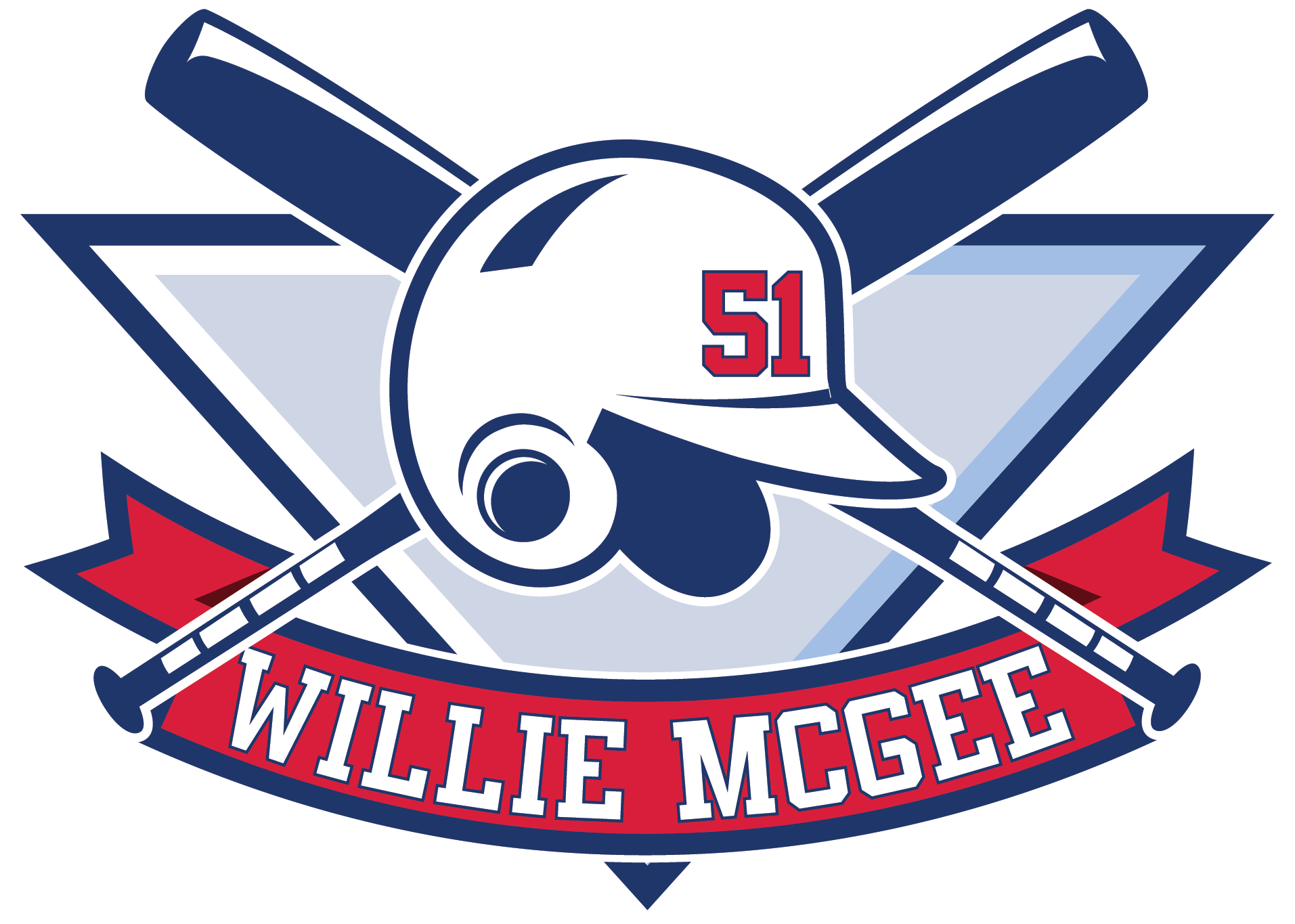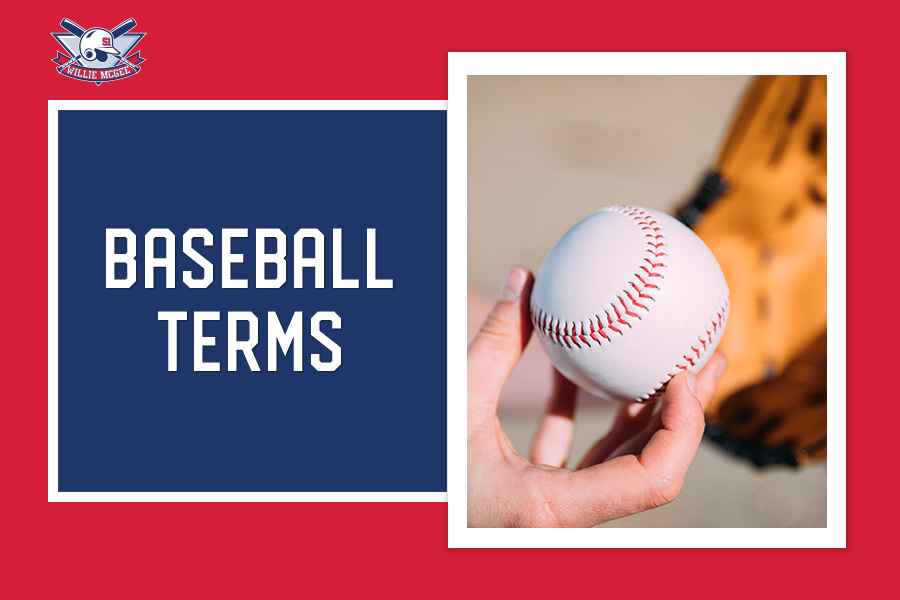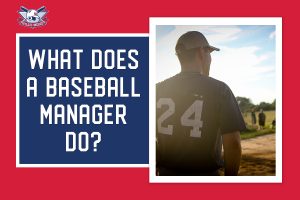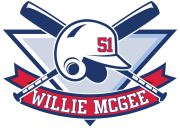Baseball might seem like a complicated sport when you watch or play it. Luckily, if you know the baseball terms, you will start to enjoy the game more.
From whom can you learn better, rather than a former professional baseball player and lifelong enthusiast like me? With the help of this article, I will transfer you from the bush league to the native baseball speakers team.
PLAY BALL!
Basic Baseball Terms
I will start the baseball glossary with the basic baseball terms everyone should know. After that, I will gradually dig deeper into the baseball terms and definitions, so you have the whole picture of the sport.
Understanding the baseball field
I like to go one step at a time. Hence, first, it is important to introduce you to the baseball field.
- Catcher’s box – the area behind the home plate occupied by the catcher.
- Batter’s box – a chalk-drawn box on the dirt surrounded by the home plate where the batter stands while waiting for the pitch from the pitcher.
- Diamond – another name for the baseball field. Some also call it a ball field or baseball diamond.
- Foul poles and foul lines – foul poles and lines are in fair territory and are used to indicate foul play.
- Home base – the five-sided white rubber slab, which is the game’s starting point. There are three other bases: first, second, and third base. All four bases are positioned to form a diamond or a square.
- Infield – the field area where most of the game is played. It is between the grass line to the home plate and consists of all the bases.
- Outfield – the field area between the grass line and home run fence.
- Pitcher’s Mound – the artificial hill between first and third base where the pitcher stands to throw the pitch.
- Running lane – a lane that begins between the home and first base and ends at first base. The foul line and a second chalk line form the running lane.
- Warning track – a dirt strip at the edges of the field to help the fielder focus on a fly ball.
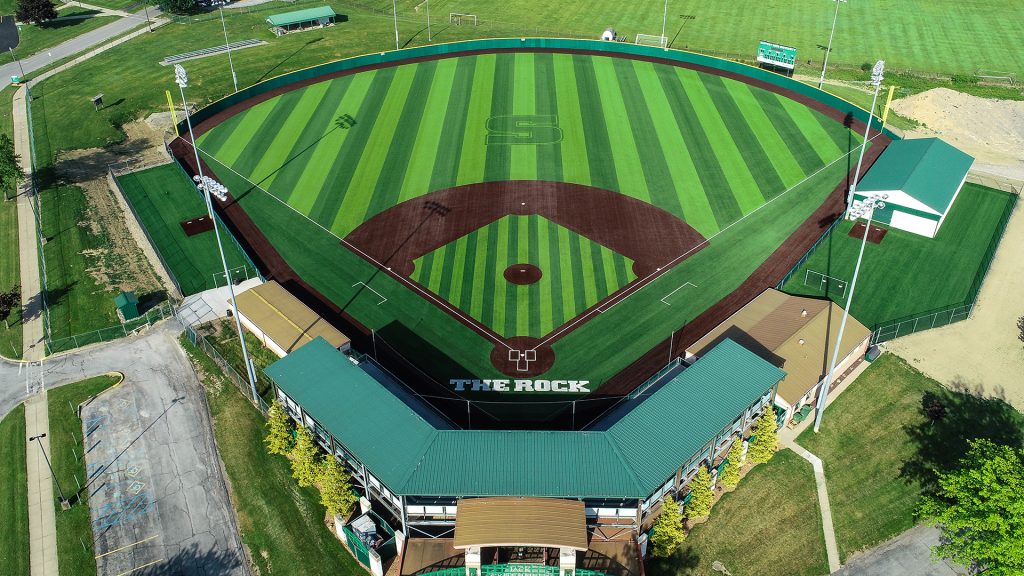
Basic terms about the baseball game
In order for you to understand the more complex terms, I first want to explain the basic baseball terms and definitions.
- At-Bat (AB) – a time when it is the batter’s turn to bat against the pitcher.
- Batting – act when the batter faces the opposing pitcher, tries to get a hit, and avoids making an out. The batter’s objectives are to become a baserunner, drive runners home, and advance runners.
- Fielding – is a defense act of catching a batted ball and preventing runs, and making outs by holding the ball and throwing it to another player.
- Hitting – when the batter reaches base safely without errors.
- Home run – the ball is hit in such a manner so the batter can make a whole circuit of the bases and safely reach the home plate. A home run can typically be done when the ball is hit between the foul poles but over the outfield fence. If you want to sound like a professional, you can say “big fly”, “dinger”, “bomb”, “jack”, “shot”, “tater”, “yak”, and “yiketty” instead of “a home run”.
- Inning – the basic unit of baseball play, and it has a top and a bottom half. In one half-inning, one team is at bat, and the other is fielding, and at the end of the half-inning, the teams switch their roles. A full baseball game consists of nine innings.
- Pitching – the baseball game starts with pitching or throwing the ball toward the home plate.
Baseball trivia – the ballparks where Major League Baseball is played have different dimensions.
Hitting and Batting Terms
Next are the baseball terms and definitions regarding hitting and batting.
A-B hitting and batting terms
- Ahead in the count – when the batter or pitcher has an advantage in an at-bat. For instance, when the pitcher has more strikes than balls or when the batter has fewer strikes than balls against the pitcher.
- Base Hit – a situation when the batter reaches base safely without the team making an error.
- Banjo hitter – a weak batter who usually hits bloops.
- Batter’s eye – the area beyond the center field wall used by the batter to look out at the pitcher.
- Blistered – used when the ball was hit with a lot of strength by the baller. When the batter takes a big swing at the ball, it is also called “hack” or “daddy hack”.
- Bunt – when the baller taps the ball instead of hitting it hard.
- Bloop – a fly ball that has been weakly hit and falls in the area between the infield and outfield. Another name for a bloop is a bloop single.
- Bean – a situation when the pitcher throws the ball in a way to hit the batter.
- Beat the rap – when the hitter hits base after the runner gets out.
- Broken bat – when the batter breaks his bat after hitting the ball.
C-H hitting and batting terms
- Caught looking – when the batter isn’t attempting to hit the ball, and three strikes are called.
- Cleanup batter – the fourth baseball player in the batting order who is generally the power hitter.
- Checked swing – the batter swings the bat to hit the ball but stops before it crosses the front of the home plate and doesn’t hit the ball intentionally.
- Crack of the bat – used to describe the sound when the ball gets in contact with the bat. It is also used as a sign for the baserunner to start running.
- Closer – a pitcher who is always used to finish the game.
- Double – the batter safely reaches second base after hitting the ball.
- Dead-red – explaining the period of time when the batter is expecting to receive a fastball.
- Easy out – a weak-hitting batter.
- Hard 90 – since the distance between the bases is 90 feet, “hard 90” is used to describe a player who runs fast from the batter’s box to the first base.
- Hat trick – a situation when one player successfully strikes out three times during the game.
- Hitting a single – the batter hits the ball and successfully, without an error, reaches base. It is also known as “base knock”.
- Hit a bullet – the batter hits the ball hard.
- Hit the deck – the movement of the batter when he tries to avoid getting hit by the pitch.
- Hitch in his swing – a situation when the batter swings the bat in more than one movement.
I-R hitting and batting terms
- In the hole – situation when the batter is following the on-deck batter.
- In the batter’s eyes – when a fastball is pitched at the eye level of the batter, which is hard to hit and lay off.
- Inside-out swing – the batter swings at the ball by holding the bat ahead of its end.
- Interstate – when the batting average is below .200. It is also called the “Mendoza line”.
- Keep the line moving – when multiple batters are getting on base safely in a row.
- Kill – the situation when the batter swings at the ball and hits it far.
- Launch angle – the vertical angle which is formed when the player hits the ball.
- Laser show – when a game has a lot of base hits, mostly line drives.
- Lead runner – the runner who is nearest to the home plate.
- Line drive – when the batter hits the ball, and it flies in a straight line.
- Lumber – another term for a wooden bat for baseball.
- Rake – a player who can hit the ball in all field parts.
S-Z hitting and batting terms
- Strikeout – when a pitcher throws three strikes in one appearance and retires the batter. The strikeout is also called “punch-out”.
- Sweet spot – the best area of the bat to hit the ball with.
- Tablesetter – the batter who is among the first in the batting order.
- Tag up – the batter hits the ball before it hits the ground.
- Triple crown – batter with most home runs, best batting average, and runs batted in the whole league.
- Wheelhouse – the power zone of the hitter.
Baseball trivia: Barry Bonds is the all-time home run scorer in Major League Baseball, with a record of 762 home runs.
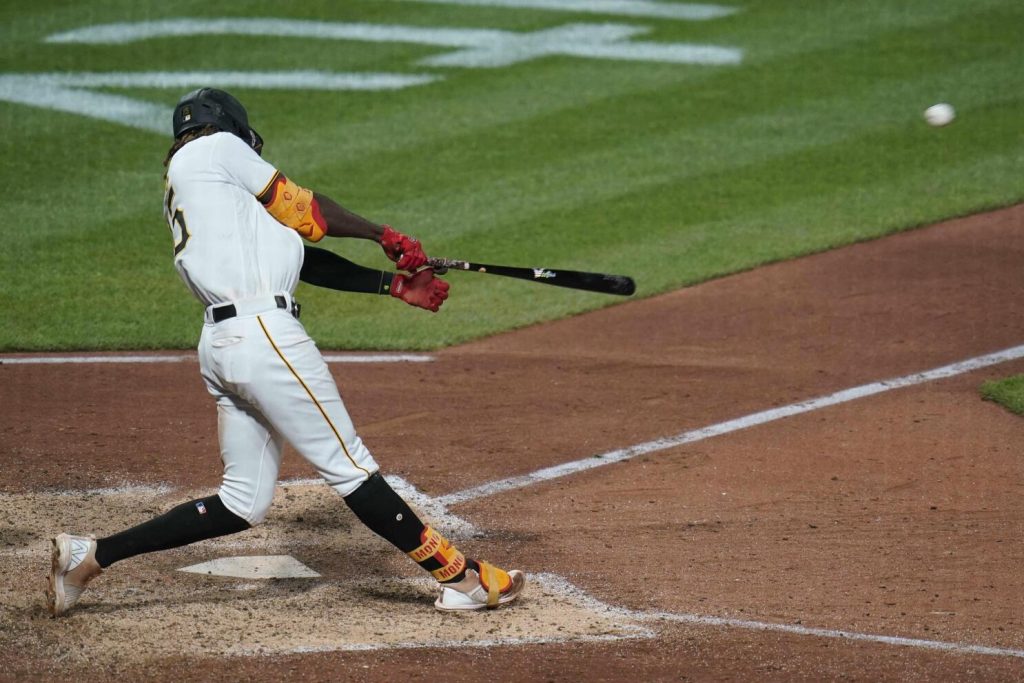
Pitching Terms
- Ace – the best pitcher on the team.
- Bazooka – represents the strong arm of the pitcher, also called gun, cannon, and rifle.
- Balk – pitching movement that is not done according to the rules.
- Battery mates – a term to describe when a pitcher and catcher are from the same team.
- Bender – a synonym for the curveball, which is a pitch that curves from the expected flight path.
- Brushback – the pitcher throws the ball near the batter to scare him. Other terms used for brushback are “purpose pitch” and “chin music”.
- Bullpen – the area where the pitchers and catchers warm up.
- Challenge the hitter – when the pitcher is throwing fastballs, throws strikes, and looks like he is aggressive.
- Chase – the pitcher who gives too many runs and is removed from the game.
- Dead arm – when a pitcher isn’t acting like himself, and his pitches are weaker than usual.
- Fastball – a very fast pitch. Other terms used for a fastball are “gas” and “heat”.
- Hurler – another word for a pitcher.
- Meatball – weakly thrown pitches that are easy to hit.
- Pitch out – a pitch that is extremely hard to hit.
- Rubber arm – when it is easy for the pitcher to get tired of throwing the ball.
Baseball trivia: Jim Abbott was a baseball pitcher who played only with one hand.
Double Play Baseball Terms
A double play in baseball, or DP, is the act of ruling out two offensive players during one continuous play. There are different variations of double play according to the players who throw and receive the ball and their order.
To better understand the positions in a double play, you should know that each player has a position with a sign assigned to them. The positions and signs in the double play baseball terms are assigned to players as follows:
- Pitcher (1/C)
- Catcher (2/P)
- First baseman (3/1B)
- Second baseman (4/2B)
- Third baseman (5/3B)
- Shortstop (6/SS)
- Leftfielder (7/LF)
- Centerfielder (8/CF)
- Rightfielder (9/RF)
Double play starting with the pitcher
- 1-2-3 double play – the pitcher fields the ground ball and throws it home to the catcher. The catcher throws the ball to the first baseman and forces out the batter. Typically occurs when the bases are loaded.
- 1-6-3 double play – the pitcher throws the ball to the shortstop forcing out the runner. The shortstop forces out the batter by redirecting the ball to the first baseman.
Double play starting with the first baseman
- 3-2-3 double play – the ball is thrown from the first baseman to the catcher and then back to the first baseman. Usually, it happens with bases loaded, and it is done to retire the runner advancing from third and force out the batter.
- 3-6 double play – the first baseman forces out the batter by stepping on first. He continues by throwing the ball to the shortstop. Then the shortstop tags out the runner.
- 3-6-1 double play – the flow of the ball is the following, from first baseman to shortstop to pitcher. The shortstop forces out the runner at second while the pitcher covers first to force out the batter.
- 3-6-3 double play – the runner is forced out at second when the first baseman fields the ball and throws it to the shortstop. Then, the batter is forced out when the first baseman returns the ball to the shortstop.
Double play starting with the second and third baseman
- 4-6-3 double play – the batted ball is fielded by the second baseman, thrown to the shortstop, and then to the first baseman. In this double play, the runner is forced out at second, but also the batter is forced out.
- 5-4-3 double play – the third baseman fields the ball, steps on third base, and throws it to the second baseman. The second baseman forces out the batter by throwing the ball to the first baseman.
Double play starting with the shortstop
- 6-4-3 double play – the process of forcing out the runner advancing from first when the shortstop throws the ball to the second baseman. Then the second baseman throws the ball to the first baseman and forces out the batter.
Other types of double play
- 7-2, 8-2, and 9-2 – the outfielder catches the ball, and the runner is tagged out by the catcher while he is trying to score from third.
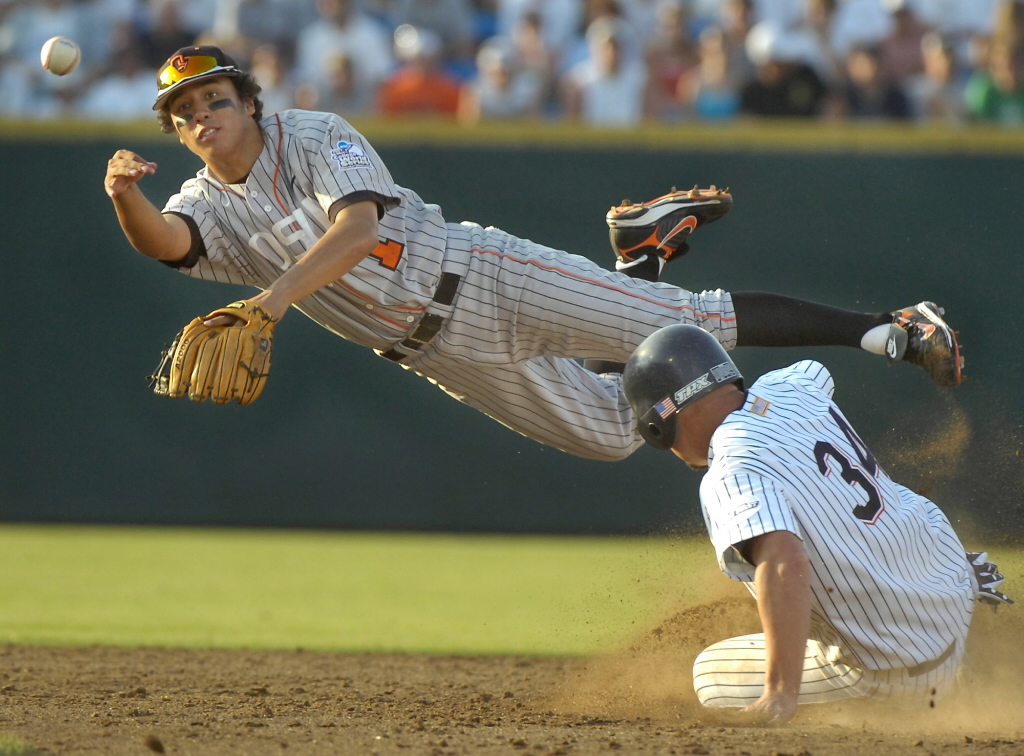
Fielding and Defensive Baseball Terms
The baseball glossary I prepared for you wouldn’t be complete without fielding and defensive terms. Here is a list of baseball expressions you must learn as a beginner.
- Around the horn – after recording an out, the infielders throw the ball between themselves.
- Booted – the synonym for making an error.
- Eat the ball – when a player fields a batted ball but holds it instead of throwing it to a base.
- Error – when the defense makes a fielding mistake allowing the batter to reach base.
- Flashing the leather-fielder who has played an excellent baseball game.
- Gold glove – the player who is the best at fielding his position.
- Hole in their glove – when players are constantly dropping the ball or when they misplay ground balls.
- Kicked – when the player makes an error while fielding the ground ball.
- PFP – short for Pitchers Fielding Practice.
- Putout – when the fielder completes an out, he is credited a putout.
- Tin glove – a baseball player who isn’t good at fielding.
- Web gem – when a player plays an incredible defensive play.
Baseball trivia: The catcher is the field general of the defense.
Base Running Terms
- Bases loaded – when there are runners on all three bases, the first, second, and third.
- Baserunner – when the player from the offensive team safely reaches base.
- Stolen Base – SB, in short, is when the baserunner successfully advances to the next base without a hit.
- Man on – the player who occupies the base.
Baseball trivia: In 2022, the rules about base sizes in MLB changed. Now, the bases on the baseball field must be 18 inches square instead of 15.
Scoring and Umpiring Terms
I wouldn’t suggest you start talking about baseball without the knowledge of the most common scoring and umpiring terms.
- Balk – umpire ruling that is made because of the pitcher’s illegal motion on the mound.
- Blue – another term for the baseball umpire. The phrase men in blue is also associated with the umpires.
- Magic words – when the umpire hears specific words, he ejects the player from the game.
- Make-up call – an umpire making an intentional bad call to the pitch after previously making a bad call to make up for it.
- Phantom tag – a wrong call by the umpire, specifically when he rules out the baserunner because he has been tagged out.
- Robbed – a term used when someone believes the umpire made an unfair call.
- Rocking chair – the third base area that the umpire occupies.
- RBI – short for “runs batted in”, and it is statistical data that credits the batter when he gives the game a chance for the run to be scored.
Baseball trivia: The highest-scoring baseball game was played in 1922 between Chicago Cubs and Philadelphia Phillies. The Cubs defeated the Phillies 26-23 and set the record of 49 runs.
Baseball Slang and Idioms
I will finish the list of baseball terms with some baseball slang and idioms. These terms can help you speak like an experienced baseball player.
- Benchwarmer – a substitute player who is rarely getting on the baseball field to play.
- Backdoor slider – a pitch that, at first sight, seems like it is out of the strike zone but breaks back over the plate.
- Bad hop – an unexpected, strange jump of the ground ball.
- Bag – a synonym for the base.
- Cellar – another word for last place.
- Circus catch – an unbelievable catch by a fielder.
- Five-foot player – baseball player who is good in everything, including throwing, running, field play, and hitting for average and power.
- Grand Slam – batter hits home run hit with all bases loaded.
- Plunked – when the pitch hits the batter.
- Rhubarb – represents fight or scuffle.
- Southpaw – a left-handed pitcher.
- Whiff – a synonym for a strikeout.
If You Want to Learn More: Fun Baseball Facts
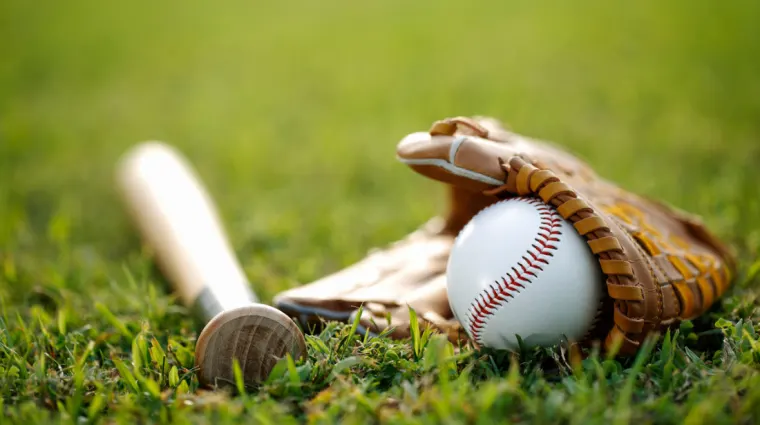
Frequently Asked Questions
What is a pinch hitter in baseball?
A pinch hitter, or PH, in short, is a substitute batter in baseball. The pinch hitter can start playing at any time while there is no active play.
What is on-deck circle in baseball?
The on-deck circle is the space on the baseball field where the next scheduled batter warms up before his turn comes. On the baseball field, there are two on-deck circles. Either team can use both.
What is the role of cut-off man in baseball?
The role of the cut-off man in baseball is to relay and help the outfielders. The cut-off man gets the ball from the outfielder and throws it to an infielder.
What are the different player positions in baseball?
In baseball, there are three groups of baseball player positions: outfield, infield, and battery. The catcher and pitcher are in the battery group. The infield players are first, second, third base, and shortstop. And the outfield group includes the left, center, and right field.
What is a perfect game in baseball, and how rare is it?
A baseball perfect game occurs when one or multiple pitchers complete at least nine innings without an opposing player reaching base in any way. The perfect game is extremely rare. MLB history has recorded only 24 perfect games.
Final Thoughts
I advise you to practice using baseball terms as often as you can while watching a game or discussing a match with your friends. Since there is much to learn, I recommend you save this article for future reference.
